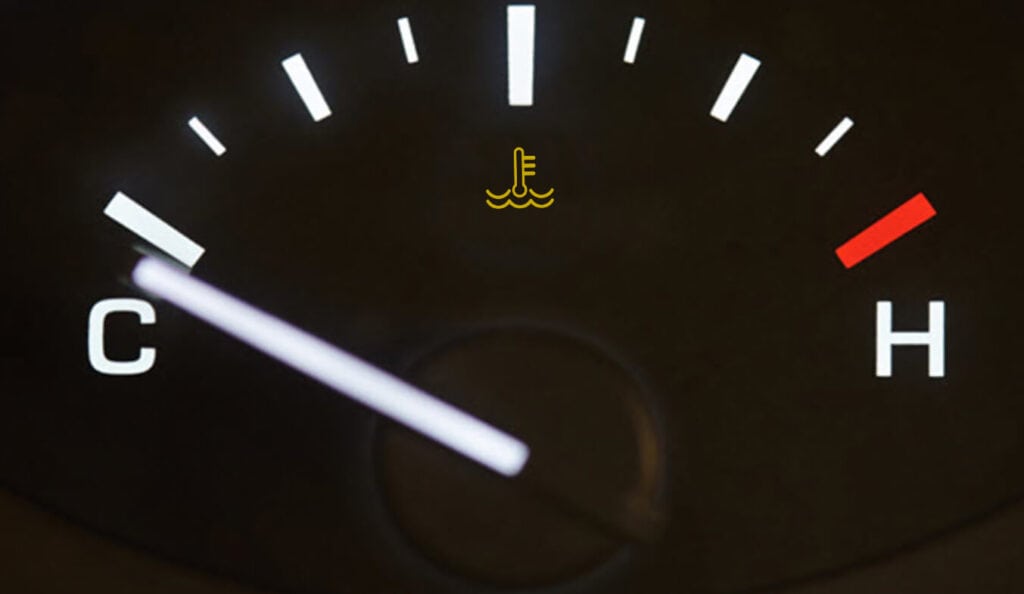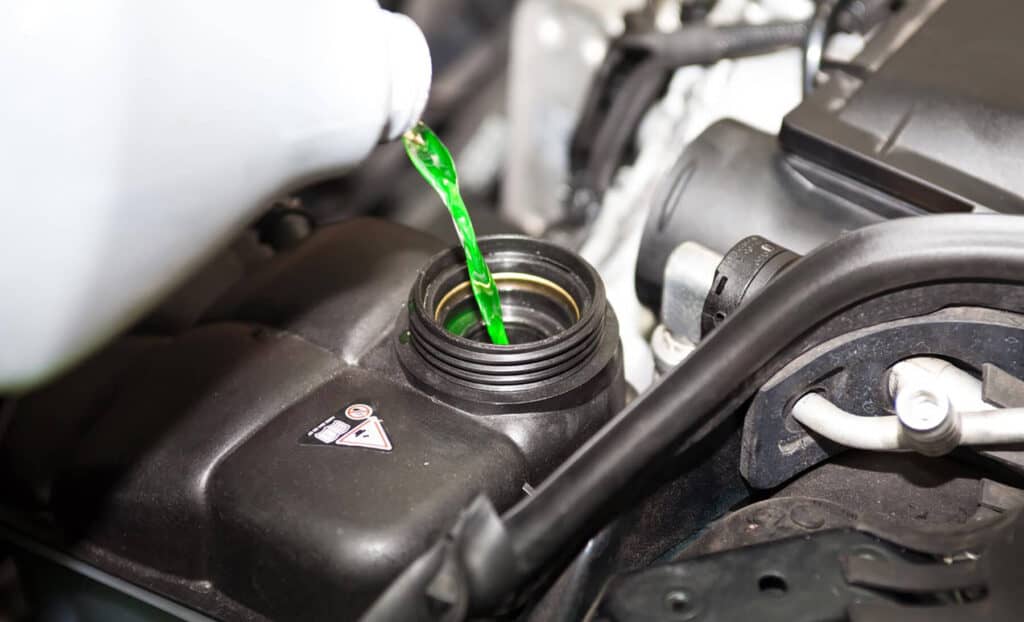The Vital Fluids of Your Vehicle’s Veins
Imagine driving down a scenic road, the wind rustling through your hair, when suddenly, a warning light appears on your dashboard. It’s a wake-up call, especially when it pertains to your vehicle’s coolant system. This isn’t just a game of dashboard bingo; ignoring the coolant warning light can jeopardize your car’s performance and even risk engine failure. You’re not just risking a repair bill; you’re gambling with your safety.
Dashboard Decoder: Understanding Low Coolant Warning Symbols
When you glance at your car’s dashboard and notice a new symbol—especially one that seems to suggest something is off—it can be a bit unsettling. One common alert is the low coolant warning symbol, often appearing as a thermometer submerged in liquid, though the specific icon may vary depending on your vehicle’s make and model. Some modern cars opt for a straightforward text alert that simply reads, “Low Coolant.” While the imagery or text may differ, they’re all basically the car’s way of saying, “Hey, we’ve got a situation here that needs your attention, pronto!”
However, this symbol isn’t just for decoration or to keep you guessing—it serves an essential purpose. Think of it as your car’s SOS flare, signaling that your coolant level is below what’s necessary for optimal performance. The coolant system plays a crucial role in maintaining the engine’s temperature, and when it’s low, you’re at an increased risk of overheating and causing permanent damage. Therefore, when this warning light comes on, consider it a call to immediate action, much like a low battery indicator on your phone urging you to find the nearest charger.

Symptoms and Signs: How Your Car Behaves When Coolant Is Low
• Overheating: The most immediate symptom is an overheating engine. The temperature gauge will spike, and you may even see steam.
• Poor Mileage: Lower coolant levels can affect your vehicle’s efficiency, leading to poor mileage.
• Odd Smells: When coolant levels are low, you may notice a sweet, syrup-like smell indicating that the coolant is burning off.
• Grinding Noises: In extreme cases, you may hear grinding noises from the engine, signaling potential damage and the need for immediate action.
• Reduced AC Performance: The efficiency of your vehicle’s air conditioning may also be affected, as some systems are interconnected.
The Mystery of the Ever-Glowing Light: Why Is My Low Coolant Light On When I’m Not Low?
We’ve all experienced that perplexing moment when the low coolant light insists on glowing, even though a quick check confirms that the coolant level is just fine. So what’s going on? Well, sensors aren’t infallible. Think of them as those finicky smoke detectors that sometimes wail even when there’s no smoke or fire in sight. Your coolant level sensor can likewise act up, giving you a false alert that sends you down a rabbit hole of confusion and concern.
The issue usually boils down to a faulty sensor, which can malfunction for several reasons such as age, wear and tear, or electrical problems. Dealing with a sensor that’s crying wolf can be irritating but ignore it at your peril. A malfunctioning sensor might also fail to alert you when the coolant level is genuinely low, and that’s a risk you don’t want to take. Therefore, it’s advised to get it checked out by a professional to either recalibrate it or replace it entirely.
Sensor Lifespan: The How and When of Coolant Sensor Replacement
Let’s talk about the lifespan of your coolant sensor. These sensors are generally reliable, but like a veteran rock star, they can sometimes start to lose their pitch after a long run. Typically, a coolant sensor can last between 80,000 to 100,000 km before you might notice its performance beginning to falter. Sometimes it’s a continuously glowing warning light when the coolant level is fine, or even more concerning, a failure to alert you when the coolant is genuinely low.
Recognizing the lifespan of a coolant sensor is crucial to preemptive maintenance. Imagine flying a plane without a fuel gauge—you wouldn’t want to risk it, would you? Likewise, driving a car with an unreliable coolant sensor is a gamble. When you start to encounter issues that suggest the sensor is faltering, it’s wise to consult a professional for a diagnostic test. It could be a simple recalibration, or it might require a sensor replacement. Either way, taking timely action can save you from a lot of headaches—and potentially significant repair bills—down the line.
Coolant Top-Up 101: When and How to Refill
1. Locate the Coolant Reservoir: Find the coolant reservoir under the hood. It’s usually a transparent container with level markings.
2. Check Levels: Before you open the reservoir, make sure the engine is cool to avoid burns. Then, check the coolant level to see if it falls between the minimum and maximum marks.
3. Prepare the Coolant Mixture: If levels are low, prepare a mixture of antifreeze and distilled water. The ratio is typically 50/50, but always check your vehicle’s manual for specific requirements.
4. Open the Reservoir: Carefully unscrew the cap of the coolant reservoir.
5. Pour the Coolant: Slowly add the coolant mixture until it reaches the “Max” line.
6. Replace the Cap: Securely place the cap back on the coolant reservoir.
7. Run the Engine: Start your car and let it run for a few minutes to circulate the new coolant.
8. Recheck Levels: Once the engine has cooled down again, recheck the coolant level to ensure it’s still adequate.
9. Monitor for Leaks: Keep an eye on the level over the next few days to ensure there are no rapid drops, which could indicate a leak.

Repairs and Expenses: What It Could Cost You
• Sensor Replacement Costs: Generally, the cost for a new coolant sensor can range from $100 to $200. This does not account for labor costs, which can vary.
• Overheating Repairs: If the low coolant leads to an overheating engine, you may need to replace the head gasket or even the entire engine. Repair costs can range from $1,000 to $3,000 depending on the extent of the damage.
• Radiator Repairs: If the radiator has been compromised due to a lack of coolant, it might need to be repaired or replaced. The cost can range from $300 to $1,200.
• Coolant Flush Costs: Sometimes, the system will need a coolant flush to remove debris and contaminants, which usually costs around $100 to $150.
• Diagnostic Costs: Before any repairs are done, diagnostics will need to be run to determine the exact issue. These costs can range from $50 to $100.
Becoming a Coolant Connoisseur
Understanding your coolant system is not just for auto aficionados; it’s basic car literacy that could save your engine and, by extension, your wallet. When the dashboard lights up with a coolant warning, knowing what steps to take can make all the difference. And if you ever find yourself stranded on the side of the road with coolant issues, remember that mobile mechanic services like Uchanics are just a call away in Canada. Armed with this knowledge, you’re not just a driver; you’re a coolant connoisseur.
